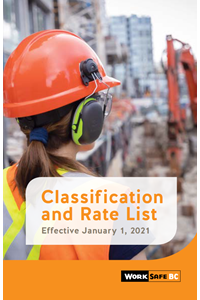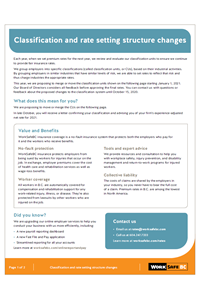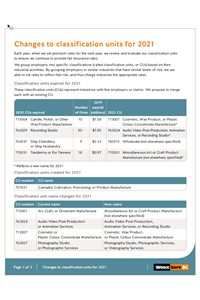2021 premium rates
WorkSafeBC announces that the average base premium rate for 2021 is 1.55% of employers' assessable payroll, which has been maintained at the same level since 2018. Our strong financial results have enabled us to keep the average rate flat for 2021.
Together with worker and employer stakeholders, we're working to reduce serious injuries and enhance return-to-work opportunities. In doing this, we can collectively help to prevent injuries, improve return-to-work outcomes, and ultimately lower insurance rates.
- Find your rate
- How the rates are set
- Resources
Insurance services during COVID-19
During the COVID-19 pandemic, WorkSafeBC remains committed to supporting your insurance needs. Learn more about our insurance services during the pandemic.
Find your rate
Our classification unit, industry, and rate search engine contains information on the premium rates for 2021, as well as information from previous years.
Find my classification unit, industry, or rateYou can learn more about changes to our classification structure by downloading the 2021 classification unit changes.
How the rates are set
The Workers Compensation Act requires WorkSafeBC to set premium rates annually for employers in order to pay for the workers’ compensation system.
Employers are placed in one of 524 classification units with other similar businesses. These classification units are then placed into one of 51 insurance pools we refer to as rate groups.
Employers in each rate group pay the costs of injuries and diseases that occur to the workers within the group, with the intent that each rate group be self-sufficient with regard to compensation costs. This limits cross-subsidization between industries, maintains relatively stable insurance rates, and limits growth of unfunded liabilities in the rate groups.
Each year, costs in some rate groups go up, some go down and others stay the same. In 2021, 46% of employers in B.C. will experience a decrease in their industry base rate, 43% will see their industry base rate increase, and 11% will see no change.
Examples of industries with rate decreases include: Forestry, House Construction, Auto Repair, Painting, Multimedia Services, Trucking, Courier, Drywall, Universities, Field Work Services, Pulp and Paper Mill, Heavy Equipment Repair, Hair Styling/Esthetics, and Sawmills.
Examples of industries with rate increases include: Pre-hospital Emergency Health Care, Local Government, Law Enforcement, Public Schools, Hospitals, Long Term Care, Residential Social Services, Community Health Support Services, Public Transit, Ferry Service, General Retail, and Supermarkets.
Example of industries with little to no change to their rates include: Law Office, Restaurants, Pubs, Large Retail, Drug Manufacture, and Religious Organizations.
More information
- Average published base rate trend information for 2021 (in table or chart form)
- Maximum Assessable Earnings (Compensation-Related Maximum Wage Rates)




